If you’ve found yourself buried under a pile of stuffed animals, you’re not alone! Stuffed animal organization can be a challenge, especially when your collection keeps growing. It could be your childhood favorites, newly acquired plush toys, or precious collector’s items, finding a way to sort, store, and declutter your plush collection is essential. In this article, we’ll share 10 brilliant stuffed animal organization hacks to help you with sorting, storing, and decluttering your plush collection, making your space more tidy and visually appealing.
1. Categorize Your Collection
The first step in organizing your stuffed animals is sorting them into categories. This will not only help create order but also ensure easy access to any item in your collection. Here are a few ideas on how to categorize your stuffed animals:
By Animal Type: Sorting by animal type is one of the simplest and most logical ways. Group your toys by categories, such as bears, rabbits, cats, dogs, and others. If you have a collection dedicated to just one animal (e.g., bears), this could be a separate category.
By Size: If your collection includes toys of various sizes, you can create groups for small, medium, and large toys. This not only helps organize the space but also makes finding the right toy much easier. For example, small toys can be stored in boxes, while larger ones can be placed on shelves or in special corner niches.
By Color Scheme: Sorting by color helps create a harmonious and aesthetically pleasing display. Divide your toys by warm and cool shades, pastel and bright colors, or simply by dominant colors (e.g., group all toys with blue or green tones together).
By Release Year: If you have collectible toys, such as those from specific series or limited editions, it’s very convenient to store them by release year. This will help you track which toys were added to your collection in different years and make it easier to find a specific item when needed.
By Artist’s Name: For those who collect handmade, artist-created toys, it’s useful to sort them by the names of the creators or even by brand. If a toy was made by a well-known artist, it may be worth highlighting it as a separate category. This helps preserve the history of your collection and allows you to easily find works by specific artists.
Such detailed categorization not only creates order but also allows each type of toy to have its place in your space, highlighting the uniqueness of your collection.
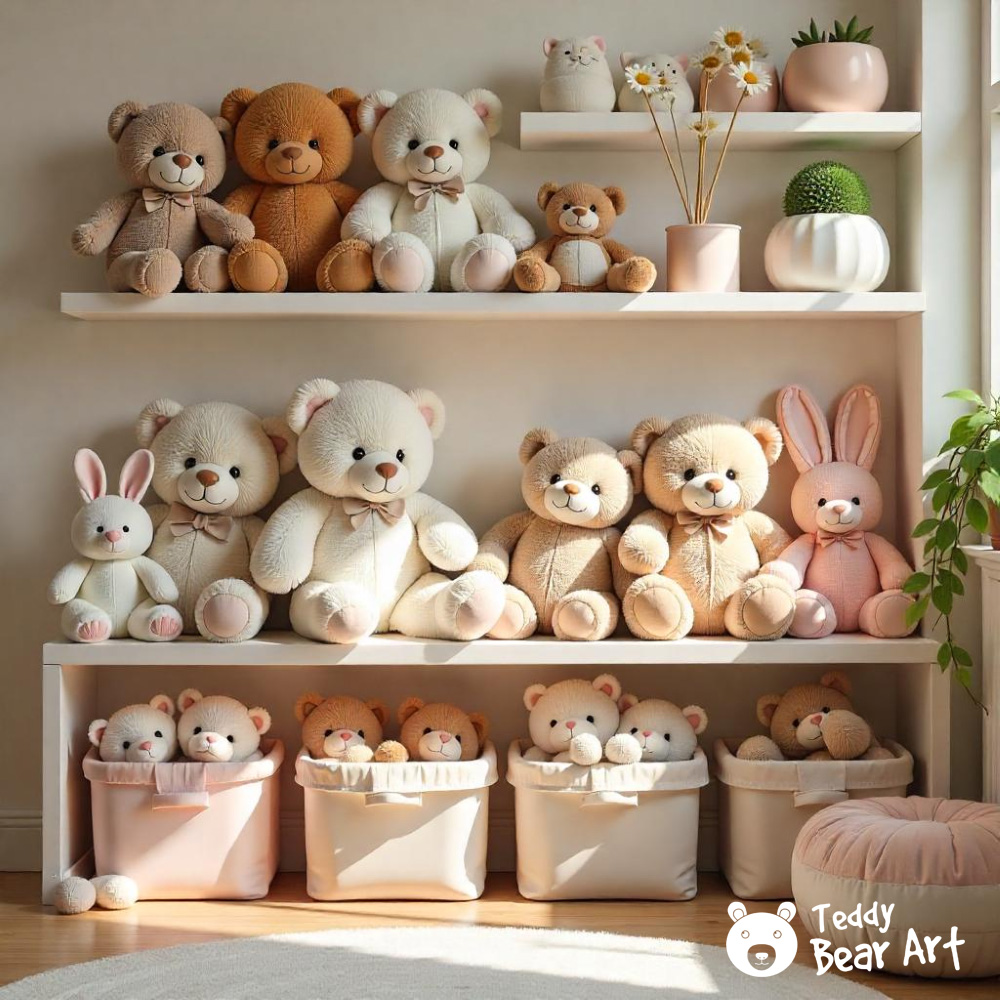
2. Use Transparent Storage Bins with Labels
When you’re storing a large collection, it can be easy to forget which toy is where. Transparent plastic bins are a game changer because they allow you to easily spot what’s inside without having to open every container. For added convenience, label each bin according to the type of stuffed animal inside. A simple labeling system, like “Teddy Bears,” “Bunnies,” or “Limited Edition Plushies,” will make finding the right toy a breeze.

3. Invest in Display Cabinets for Collector’s Items
Collector’s plush toys, especially those from brands like Steiff or handmade treasures, deserve to be displayed properly. A display cabinet with glass doors provides protection from dust while giving your stuffed animals a place of honor. You can also add some soft lighting inside the cabinet to make your plush collection really stand out. These cabinets can be placed in a living room or even a dedicated display area to ensure your valuable toys are both protected and admired.

4. Hanging Storage for Space-Saving
One of the most practical ways to store stuffed animals is by utilizing wall space. Use hooks or hanging nets to suspend your toys from the ceiling or walls. This method works particularly well for plush toys that are used for play and don’t need to be kept in pristine condition. Hanging storage not only keeps them off the floor, but it also helps create a whimsical, fun display that kids will love.
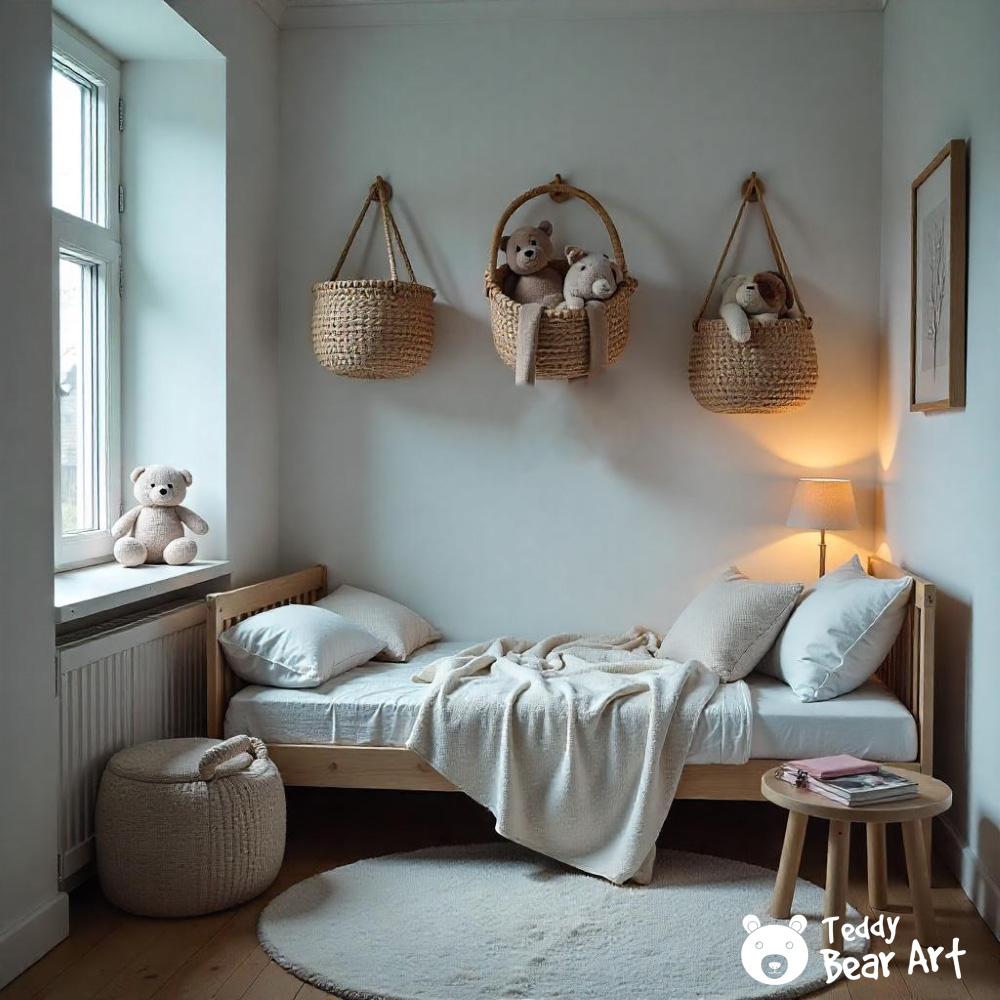
5. Soft Toy Hammocks for Easy Access
Soft toy hammocks are a great way to keep your stuffed animals off the floor while still keeping them easily accessible. Hanging a hammock in a corner or behind a door creates a charming, cozy display that showcases your toys while saving space. These hammocks are perfect for toys you want to keep close at hand for playtime or display. If you’re not sure which hammock is right for you, check out our detailed guide on the 5 best stuffed animal hammock ideas, including pros and cons, to help you choose the perfect one for your collection.
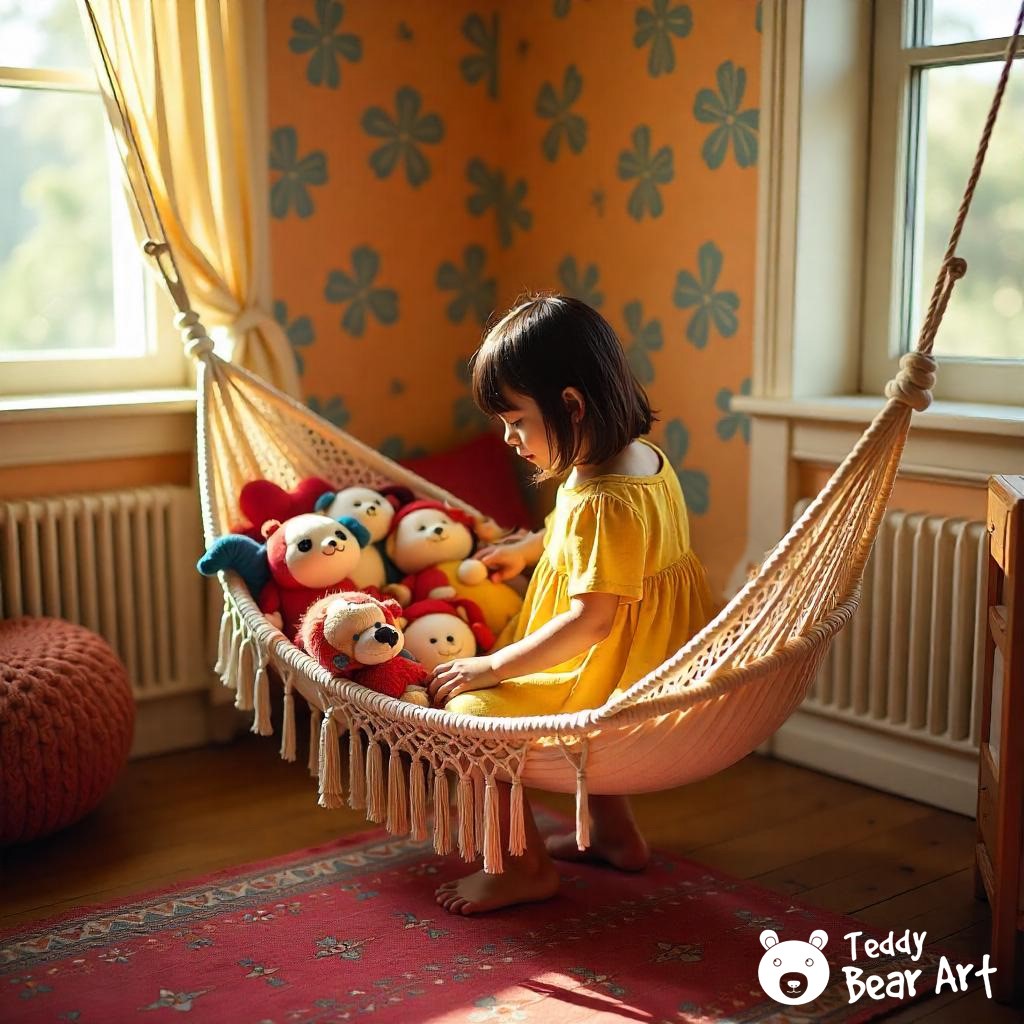
6. Under-Bed Storage for Hidden Organization
For stuffed animals that are less frequently played with, consider utilizing the space under your bed. Storage bins with wheels are perfect for sliding under the bed, providing hidden storage that’s out of sight but still accessible. You can organize your collection in these bins by grouping similar types together, such as placing all the bears in one container and all the animals from a particular theme in another.
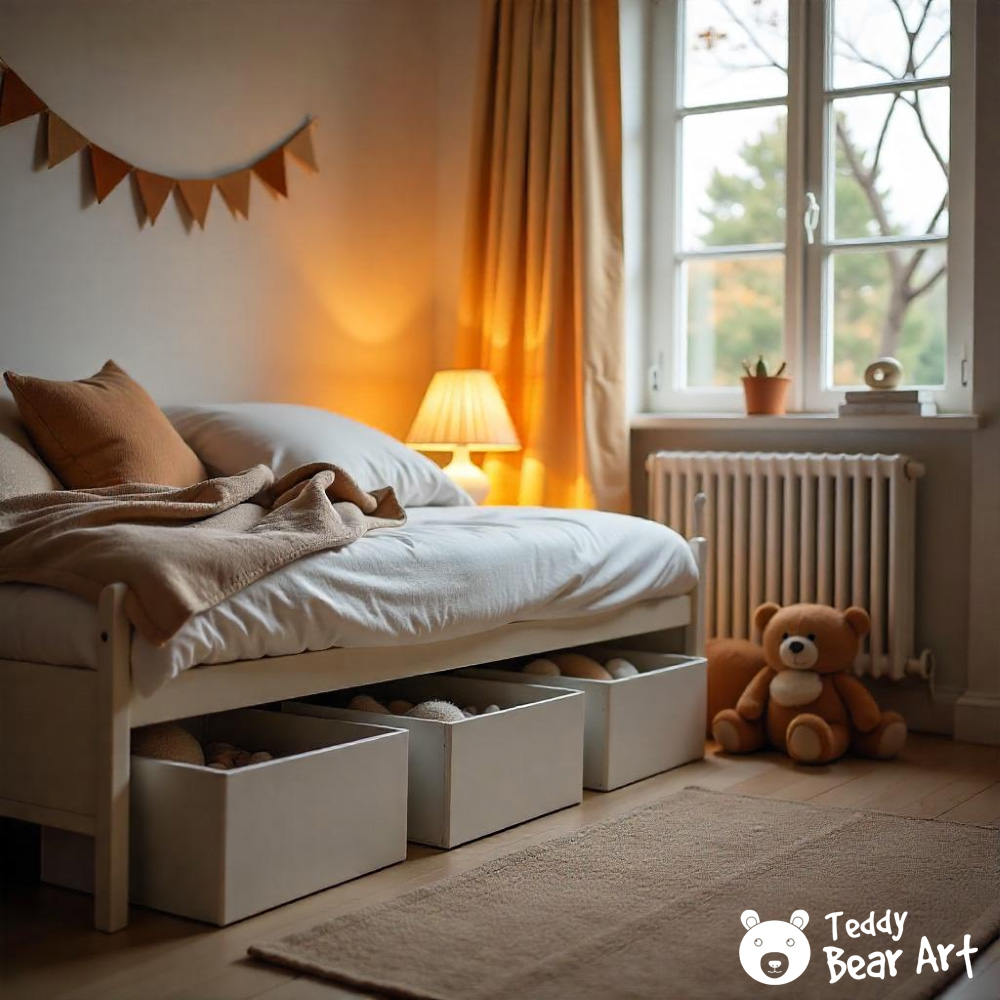
7. Use Toy Chests for Quick Clean-Ups
Toy chests are a classic solution for organizing stuffed animals, especially in rooms where space is at a premium. These chests can be placed at the foot of a bed or in a corner, offering easy access for kids to throw their toys inside after playtime. Look for toy chests that are both functional and stylish, blending seamlessly with the rest of the room’s decor. With a toy chest, tidying up becomes as easy as tossing everything inside.
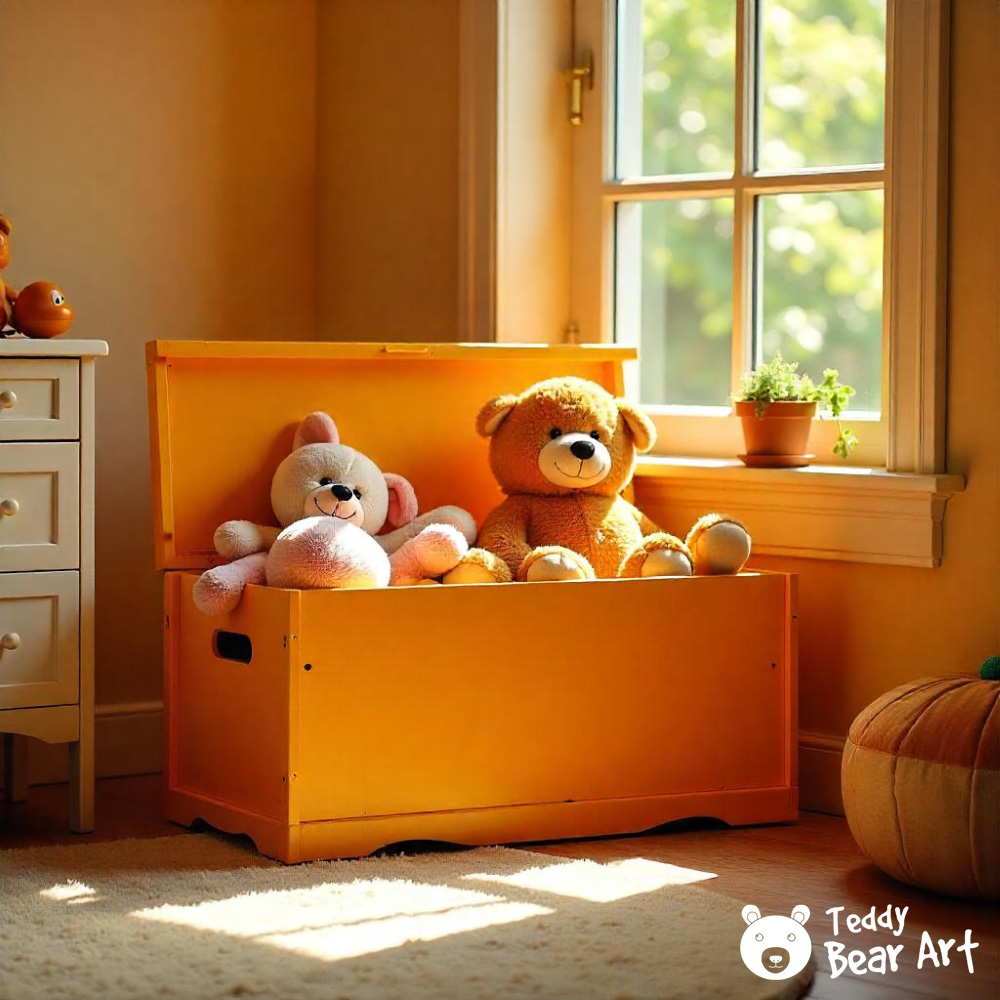
8. Keep Limited Edition and Handmade Plushies Safe
To keep rare and handmade toys in perfect condition, in addition to storing them in display cabinets with closed doors (as mentioned earlier in the article), it’s important to consider other protection methods. Using protective covers or boxes with anti-static properties will provide additional protection against dust and dirt. If the toys have fragile or delicate elements, it’s useful to wrap them in soft fabrics, such as flannel or velvet, to prevent deformation and damage.
It’s also a good practice to create individual boxes for each item, especially for collectible toys. For more detailed information on how to care for collectible toys and cleaning, you can refer to our guide on caring for collectible teddy bears. If the collection includes toys with natural material elements, it’s important to regularly check their condition and ensure the storage area is ventilated to prevent moisture buildup, which could damage the materials.
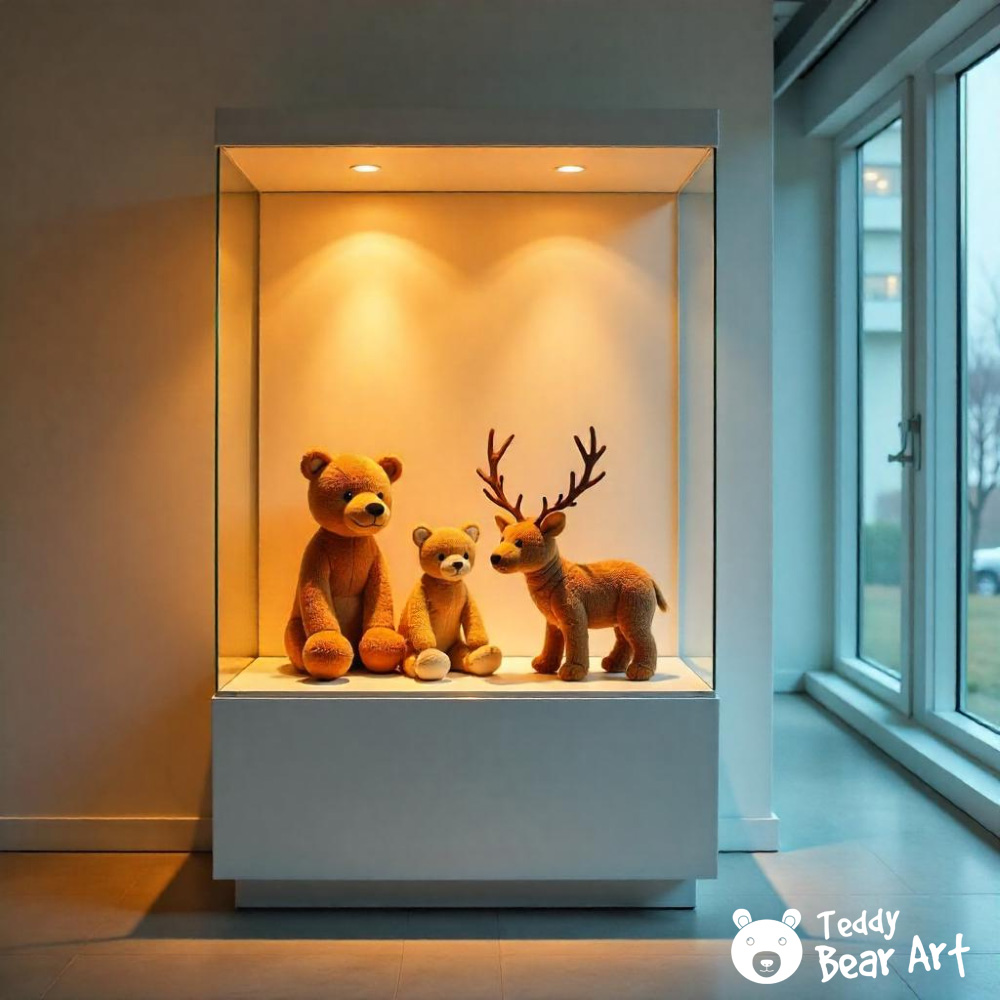
9. Declutter by Donating or Selling Unused Toys
Sometimes our interests change, and the toys that once brought us joy no longer spark the same enthusiasm. It’s important to periodically review your collection and part with toys that no longer meet your current needs or desires. This not only frees up space but also allows others to enjoy these toys.
Organizations like Goodwill or local shelters are great places to donate gently used toys. You can also sell them online through platforms like eBay, Facebook groups for collectors, specialized toy-selling websites, or at fairs and markets. It’s a great way to find new owners for rare or collectible items that may appeal to others.
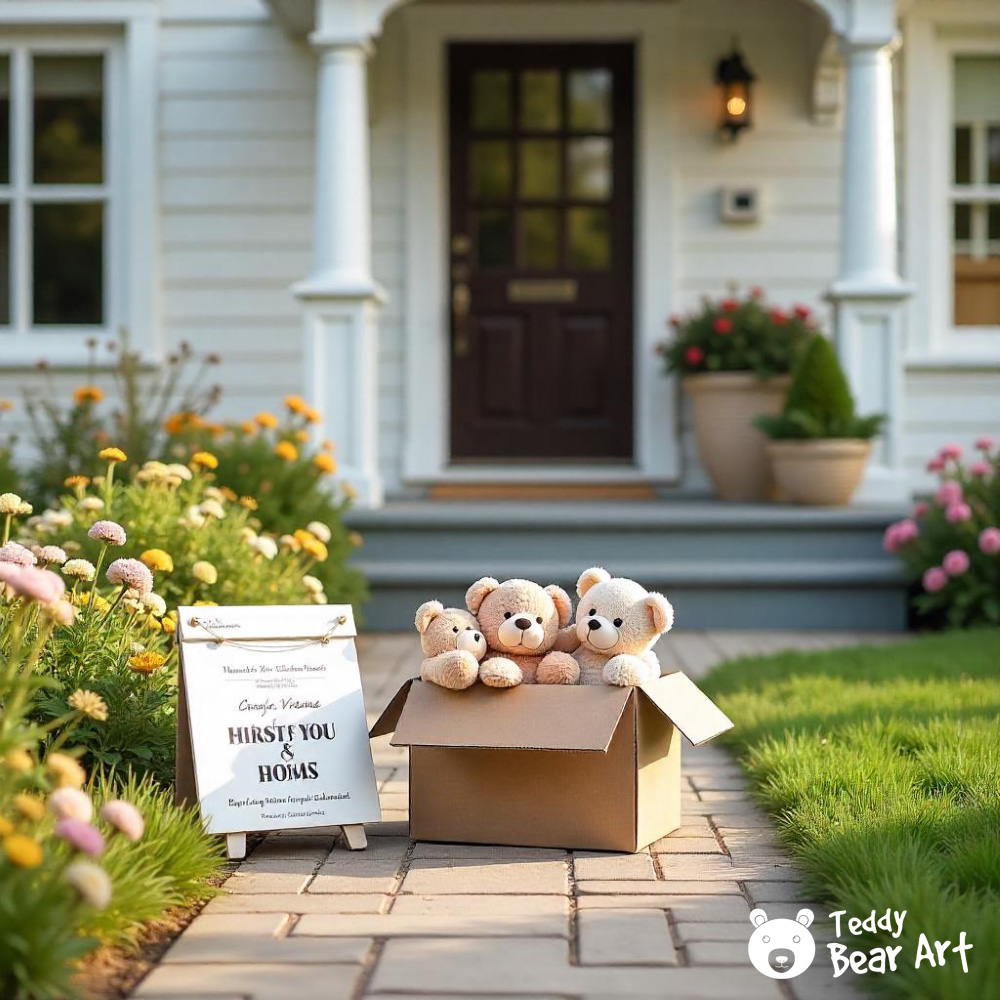
10. Rotate Toys Seasonally
A simple way to keep your collection fresh and your space decluttered is to rotate your stuffed animals seasonally. Store away toys that are out of season and bring out the ones that fit the current time of year. For example, bring out cuddly bears during the colder months and keep lighter, summer-themed animals like sea creatures or bunnies on display in warmer weather. This method keeps your collection interesting and manageable without overwhelming your space.

More Stuffed Animal Organization Hacks
After sorting and storing your stuffed animals, it’s time to showcase them in a way that’s both functional and fun. Here are a couple of fantastic resources to inspire your next steps:
- 10 Stylish Stuffed Animal Display Ideas – Discover creative and chic ways to display your plushie collection and add personality to any room.
- 7 Best Practical Stuffed Animal Storage Ideas for Small Spaces – Find practical and space-saving storage solutions that will keep your stuffed animals organized without sacrificing style.
These ideas will help you turn your collection into a delightful display that you’ll be proud to show off!
The images for this post were created with the help of Freepik and slightly adjusted to match the article.
Join Us for Exclusive Content and Updates!
Are you seeking more inspiration, free patterns, tutorials, and tips for crafting adorable teddy bears? Join our Facebook page for exclusive updates, and don’t forget to subscribe through the Spotlight form towards the beginning of the article—this is your chance to access exclusive content and win teddy bear crafting supplies!
Let’s create together and share the joy of teddy bear art!

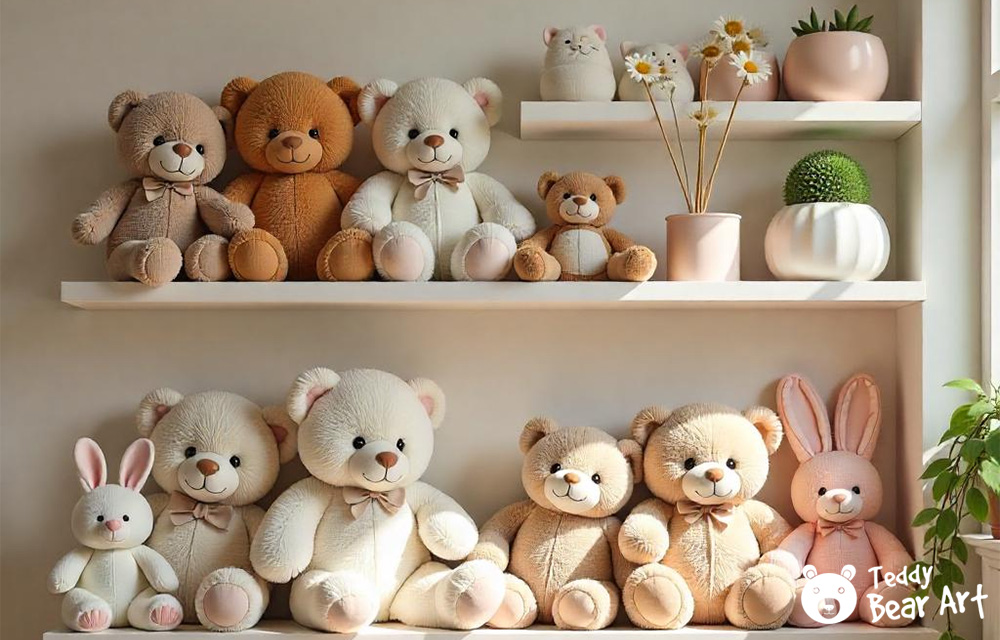
These organization hacks are great! I’ve used the hanging net storage for stuffed animals before, and it really helps keep things tidy while still displaying them. Have you tried any space-saving ideas like using a toy chest or rolling storage bins? Those can also be great for keeping the toys accessible but out of sight. What’s your favorite storage hack from the list?
I really like using clear containers for storage, which are kept in my closet, hidden from the sun. I occasionally switch out the toys, taking one out and hiding others. I also really love glass cabinets and display cases; anything related to glass — I enjoy having glass in the interior. Additionally, glass cabinets highlight the value of collectible toys.
Wow, this list is super helpful! I have a growing collection of stuffed animals, but I have no idea how to organize them properly—I just keep piling them up! I love the idea of sorting by size or color, but I’m worried I’ll forget where I put my favorites.
Do you have any tips for keeping track of special plushies without making a huge mess? Also, how do you decide which ones to donate or store away? I feel like I get attached to all of them! ????
Oh, I totally get you! When you have a growing collection of plushies, you want to keep things organized but still have your favorites within reach. You could set aside a special spot for the most cherished ones—maybe on a shelf or in a glass cabinet—so they’re always on display.
If you have a lot of them, storing them in clear boxes or bags can be really helpful. That way, you can see what’s inside without digging through everything. You could even label them or attach a photo to make it easier to find a specific plush.
Another fun idea is to rotate them by season! For example, in the fall, you can bring out the teddy bears in cozy sweaters, and in the summer, display the bright and lightweight plushies. It keeps your collection feeling fresh and exciting!
If you’re worried about forgetting where you put your favorites, you could keep a little album or notes with photos, listing where they’re stored and what makes them special. And when it comes time to part with some of them, just ask yourself: does this plush still bring me joy? If it’s been sitting untouched for a long time, maybe it’s time for it to find a new home.
And of course, taking photos or writing little stories about your plushies is a great way to keep the memories alive. ????